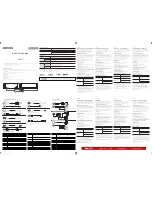
308353
13
Operation/Maintenance
(AIR-POWERED PUMPS)
Flush the Pump Before First Use
The pump is tested with lightweight oil, which is left in
to protect the pump parts. If the fluid you are using
may be contaminated by the oil, flush it out with a
compatible solvent. See
Flushing
on page 14.
Starting and Adjusting the Pump
1. See Fig. 2 on page 9. Connect the suction kit (T)
to the pump’s fluid inlet. Place the tube into the
fluid supply.
2. Close the air regulator (F).
3. Open the pump’s bleed-type master air valve (E).
4. Hold a metal part of of the gun (S) firmly to the
side of a grounded metal pail and hold the trigger
open.
5. Slowly open the regulator until the pump starts.
6. Cycle the pump slowly until all air is pushed out
and the pump and hoses are fully primed.
7. Release the gun trigger and lock the trigger safety.
The pump should stall against pressure.
8. If the pump fails to prime properly, open the drain
valve (M). Use the drain valve as a priming valve
until the fluid flows from the valve. Close the valve.
NOTE:
When changing fluid containers with the hose
and gun already primed, open the drain valve (M) to
help prime the pump and vent air before it enters the
hose. Close the drain valve when all air is eliminated.
CAUTION
Do not allow the pump to run dry. It will quickly
accelerate to a high speed, causing damage. If your
pump is running too fast, stop it immediately and
check the fluid supply. If the container is empty and
air has been pumped into the lines, refill the con-
tainer and prime the pump and the lines, or flush and
leave it filled with a compatible solvent. Eliminate all
air from the fluid system.
9. With the pump and lines primed, and with ade-
quate air pressure and volume supplied, the pump
will start and stop as you open and close the gun.
In a circulating system, the pump will speed up or
slow down on demand, until the air supply is shut
off.
WARNING
COMPONENT RUPTURE HAZARD
To reduce the risk of overpressurizing
your system, which could cause compo-
nent rupture and serious injury,
never
exceed the specified Maximum Incoming Air Pres-
sure to the pump (see the
Technical Data,
on
pages 36–44).
10. Use the air regulator (F) to control pump speed
and fluid pressure. Always use the lowest air
pressure necessary to get the desired results.
Higher pressures cause premature tip and pump
wear.
Содержание Dura-Flo 900
Страница 35: ...Notes...














































